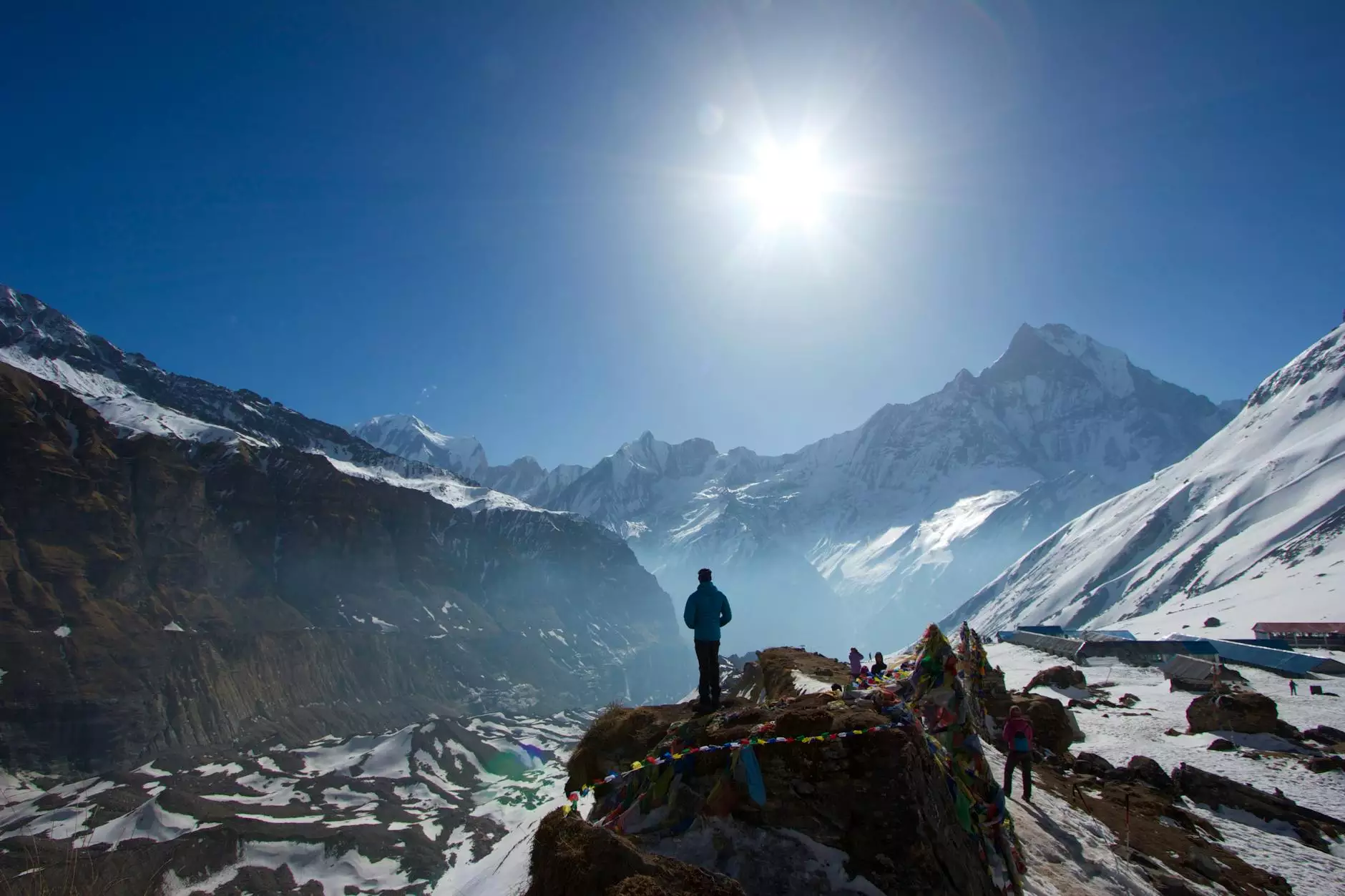How High is Annapurna? Exploring the Majestic Annapurna Range

Annapurna, part of the Himalayas, is not only renowned for its breathtaking beauty but also for its exceptional height. In this article, we will delve deep into the world of Annapurna, exploring its significance, trekking routes, and travel insights, particularly for those intrigued by the question, How high is Annapurna?
Annapurna: The Crown Jewel of the Himalayas
Located in the heart of Nepal's Annapurna Conservation Area, the Annapurna mountain range boasts some of the highest peaks in the world. The name 'Annapurna' translates to “full of food” in Sanskrit, which symbolizes the abundance found in this magnificent area. The range includes several summits, with Annapurna I being the tallest at an impressive 8,091 meters (26,545 feet) above sea level. This elevation makes it the tenth highest mountain in the world, presenting both a challenge and an allure for climbers and trekkers alike.
Understanding the Annapurna Massif
The Annapurna Massif encompasses a series of peaks including Annapurna I, Annapurna II, Annapurna III, and Annapurna IV. Let’s look at some of the notable features:
- Annapurna I: The highest peak in the range, standing at 8,091 meters, is known for its challenging climbs.
- Annapurna II: This peak reaches a height of 7,937 meters and is regarded as the second highest peak in the Annapurna range.
- Annapurna III: At 7,555 meters, this peak attracts climbers looking for less treacherous routes.
- Annapurna IV: The smallest among the four major summits at 7,525 meters.
The Climbing Challenge: Why is Annapurna So Difficult?
Climbers are often drawn to the beauty of Annapurna, but its heights also present significant challenges. The region exhibits notoriously unpredictable weather patterns and high rates of avalanche activity. Annapurna has a high fatality rate among climbers, making it a daunting venture. It's crucial for trekkers and climbers to prepare adequately, ensuring they understand both the risks and the skills necessary to undertake such an expedition.
Trekking in the Annapurna Region: A Journey of a Lifetime
While climbing Annapurna I remains a formidable challenge reserved for experienced mountaineers, trekking the Annapurna Circuit and Annapurna Base Camp routes is accessible to many adventurers. Here’s what you need to know:
Trekking Routes Overview
- Annapurna Circuit Trek: A classic trek that takes approximately 14-21 days, depending on your pace and acclimatization. This route spans around 160-230 kilometers and offers breathtaking views of the Annapurna range, diverse flora, and rich culture.
- Annapurna Base Camp Trek: This trek, generally lasting around 7-12 days, leads trekkers through stunning landscapes and eventually to Annapurna Base Camp, which lies at an altitude of 4,130 meters (13,549 feet).
Required Preparation for Trekkers
Preparation is key for a successful trek in the Annapurna region. Here are some essential tips:
- Physical Fitness: Engage in cardiovascular and strength-training exercises in the months leading up to your trek.
- Acclimatization: Give your body time to adjust to higher altitudes to prevent altitude sickness.
- Gear and Equipment: Invest in quality trekking gear, including boots, clothing, and a reliable backpack.
- Travel Insurance: Ensure you have appropriate insurance that covers high altitude trekking.
Best Time to Visit Annapurna
The best months to trek in the Annapurna region are typically during spring (March to May) and autumn (September to November). These seasons offer stable weather conditions and stunning views, allowing trekkers to fully appreciate the grandeur of Annapurna.
Travel Services: Enhancing Your Experience in Annapurna
For a seamless and enriching experience in the Annapurna region, consider utilizing local travel services. Reputable travel agents can provide invaluable insights, guide you through the region, and arrange all necessary logistics for your trip. At My Everest Trip, we specialize in making your Himalayan dreams come true with top-notch travel agents knowledgeable about the area.
Advantages of Using Local Travel Agents
- Expert Guidance: Local guides offer expertise about the terrain, culture, and history of the region.
- Logistical Support: They help arrange permits, accommodations, and transportation.
- Safety Measures: Local agents prioritize the safety and wellbeing of their clients, crucial in challenging environments.
- Support Local Economy: Choosing a local agency contributes to the economic sustainability of the region.
Conclusion: The Allure of Annapurna
To sum it up, when pondering how high is Annapurna, one must also reflect on the journey that comes with exploring this breathtaking region. From the mesmerizing heights of its peaks to the rich culture of its inhabitants, Annapurna offers an experience like no other. Whether you are a seasoned climber or an enthusiastic trekker, Annapurna promises a journey filled with marvels that will leave you forever changed.
Embrace the adventure and consider the expert travel services available through reputable agencies like My Everest Trip to ensure that your expedition to Annapurna is nothing short of extraordinary. Your journey awaits in the shadow of the majestic Annapurna.









